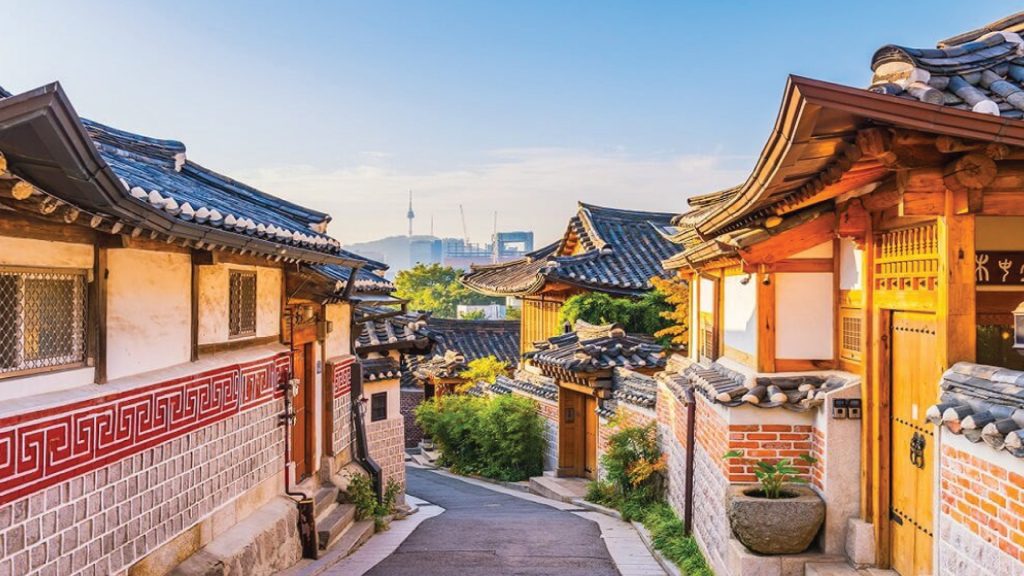Jeonju’s Hanok Architecture and Bibimbap Origin Spark Cultural Revival
In 2025, Jeonju Hanok Village—nestled in the heart of North Jeolla Province—has emerged as South Korea’s most enriching cultural escape. Comprising over 800 traditional hanok houses, the village offers a living museum of Korea’s architectural heritage. Unlike Seoul’s gleaming towers and neon-lit streets, Jeonju’s hanok district remains rooted in history, with curved eaves, wooden verandas, and courtyard gardens that whisper stories of Confucian scholars and Joseon-era customs. This aesthetic authenticity gained renewed popularity as travelers sought real connections to heritage beyond the usual urban hustle. But more than its architecture, Jeonju holds culinary prestige as the birthplace of bibimbap—the colorful rice bowl garnished with vegetables, meat, chili paste, and fried egg. In 2025, this dish is no longer just a menu staple; it is a cultural emblem, served in heirloom hanok settings and celebrated through cooking demonstrations and vibrant food markets that underscore its legendary regional roots.
Shifting From Commercial Seoul to Slow‑Living Towns
Seoul’s districts—Myeongdong, Gangnam, Hongdae—continue to thrive as vibrant urban hubs, but 2025 marks a clear traveler pivot toward quieter destinations like Jeonju. Myeongdong’s buzz of K-pop stores, cosmetic boutiques, and crowded food stalls has begun to feel repetitive for tourists seeking lasting memories. Instead, millennial and Gen Z tourists are turning to Jeonju for its unhurried rhythm, environmental aesthetics, and authentic encounters. Hanok stays allow visitors to sleep on ondol floorbeds, sip from traditional tea sets, and wake to roosters crowing in the courtyard—immersive sensory experiences impossible in Seoul’s skyscraper hotels. This slow‑living trend aligns with global wellness travel, as visitors swap neon lights and loud crowds for handcrafted pottery workshops, storytelling folk performances, and meditation in temple nooks hidden within winding alleyways.
Authenticity Rooted in Food‑Linked Heritage
What elevates Jeonju beyond being a picturesque hanok village is its status as a live heritage birthplace. Here, chefs and home cooks share family recipes dating back 100 years, teaching travelers how to pick seasonal greens for bibimbap, ferment gochujang chili paste in earthen jars, and press barley punch for a refreshing finish. Monthly “Bibimbap Festivals” draw crowds to watch chili-beating performances, hanji paper-making demos, and kimchi-smoking processions—rituals that fuse flavor with folklore. Gyeonggijeon Shrine, where Korea’s original royal portrait is enshrined, now hosts lunchtime hanjeongsik—multicourse meals with royal roots—served within its 16th-century corridors. Even the local street foods—jeon (pan-fried pancakes), makgeolli (millet wine), choco-ppang (sweet bread)—have been revived in artisanal form, finding fans in Seoul food critics and international travel influencers. Every meal connects the plate to place, and leaves the diner attributing meaning to taste.
Experiential Elegance Versus Urban Convenience
Seoul excels at convenience—subway rides, 24-hour cafes, duty-free bargains—but authenticity, depth, and artistry now define traveler preference. In Jeonju, breakfasts are egg-and-mungbean pancake sets served on ceramic trays by hanbok-clad hosts at dawn; afternoons consist of weaving hanji paper lanterns in community workshops; evenings are reserved for traditional music concerts in hanok courtyards under paper lantern glow. Contrast this with hastened shopping in Seoul’s retail districts and it’s clear why Jeonju appeals to the traveler weary of consumerist loops. The village’s embrace of experiential travel—craft, cuisine, calm—is feeding a renaissance in regional tourism, earning Jeonju transformative recognition in 2025.

Cultural Conservation Through Tourism
Jeonju’s success does not come at the cost of heritage loss. In fact, tourism revenue backs preservation initiatives: freely accessible hanok restoration centers, cultural-immersion scholarships for local youth, and open-air stages for pansori (traditional Korean storytelling). Electric carts and walking-only zones minimize traffic and noise pollution. Wi-Fi is available, but digital screens are rare. Tourists find no neon signage or karaoke booths, but instead lantern-lit paths, tea-house chiming doors, and steamed dumplings shared at communal tables.
Media Narratives Shift in 2025
Travel magazines and influencers have pivoted coverage. Where 2020–2022 trendlines highlighted Seoul’s glitter, 2023–25 press and TikTok narratives now extol Jeonju’s rustic charm, often attesting that it feels like stepping into a historical Korean drama. Travel ratings platforms note higher satisfaction scores—Jeonju average 9.3/10 versus Myeongdong 7.8—especially among travelers aged 25–39 and those with a passion for culture, history, and slow living. UNESCO and Korean heritage offices now include Jeonju hanok district in international lists of best-preserved historical villages.
For Readers Craving Authenticity and Heritage
For Roamcox readers—who prize depth, discovery, and authenticity—the Jeonju story is magnetic. It bridges gastronomy and geography, letting travelers taste tradition where it originated, walk within centuries-old architecture, and leave with memories infused with culture, rather than purchases. Jeonju offers lessons in quiet beauty, keeping pace with wellness travel’s write-your-own-speed mandate.
Conclusion
In 2025, Jeonju Hanok Village isn’t merely a charming alternative to Seoul—it is a leading cultural destination that embodies Korea’s essence: architecture, cuisine, artistry, and calm woven into everyday life. As travelers trade neon convenience for hanok nocturnes, bibimbap breakfasts, and lantern-lit lanes, Jeonju’s rise is not accidental—it is emblematic of a broader value shift: toward authenticity, heritage, and experiential depth. In a world of endless options, Jeonju stands apart—not because it shouts louder, but because its whispers are unforgettable.





















